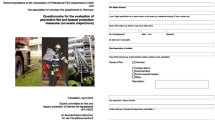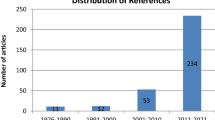Abstract
Wildfires are a major natural disaster that can threaten the safe and stable operation of overhead transmission lines. Compared with large-area forest fires, transmission-line wildfires usually cover a small area and spread rapidly, making monitoring accuracy and real-time requirements of high priority. Wildfire monitoring based on satellite remote sensing has advantages in terms of monitoring-range width and the capacity for real-time monitoring; however, the detection threshold changes dynamically due to the influences of climate, geography, weather, and other factors that affect monitoring accuracy. To focus on small-area wildfires near overhead transmission lines, we developed a partition dynamic threshold calculation method based on time-series prediction. Basic thresholds are obtained based on a large number of historical values, followed by partitioning one of these values according to digital elevation model data and subsequent correction. Compared with conventional constant-threshold monitoring methods, our proposed method significantly reduced missed and false detection rates. Additionally, to improve fire-spot localization to the overhead transmission-line towers, we developed a tower-location algorithm based on block searching. Compared with the traditional traversal algorithm, our algorithm enabled a 15,000-fold increase in operation speed. These improvements will significantly enhance the monitoring of transmission-line wildfires, which are highly reliant upon alarm speed.






Similar content being viewed by others
References
Beverly JL, Bothwell P (2011) Wildfire evacuations in Canada 1980–2007. Nat Hazards 59(1):571–596
Dech S (2013) A personal perspective on future paths for remote sensing to proceed in earthquake science. Nat Hazards 68(1):197
Deng H, He Z, Xu Y, Ma J, Liu J, Guo R (2010) An investigation on two-phase mixture discharges: the effects of macroparticle sizes. J Phys D Appl Phys 43:255203
Giglio L, Csiszar I, Jeffrey T et al (2008) Active fire detection and characterization with the advanced spaceborne thermal emission and reflection radiometer (ASTER). Remote Sens Environ 112(6):3005–3063
Hara M, Negara Y, Setoguchi M, Kurihara T, Suehiro J (2005) Particle-triggered pre-breakdown phenomena in atmospheric air gap under ac voltage. IEEE Trans Dielectr Electr Insul 12:1071–1081
Jain SK, Thakural LN, Singh RD et al (2011) Snow cover depletion under changed climate with the help of remote sensing and temperature data. Nat Hazards 58(3):891–904
Jin M, Shepherd JM, Peters-Lidard C (2007) Development of a parameterization for simulating the urban temperature hazard using satellite observations in climate model. Nat Hazards 43(2):257–271
Li X (2009) Discussion on measures of preventing forest fire on transmission lines. China Electric Power Educ 25:240–245 (in Chinese)
Li J, Gu X, Yu T et al (2010) Detection of Australian southeast forest fire using HJ satellite. J Beijing Univ Aeronaut Astronaut 36(10):1221–1224 (in Chinese)
Liu L, Wei R, Zhou Z (2011) Forest and grassland fire detection algorithm based on dynamic threshold. Geomat Inf Sci Wuhan Univ 36(12):1434–1437 (in Chinese)
Liu J, Yang H, Yu S et al (2018) Real-time transient thermal rating and the calculation of risk level of transmission lines. Energies 11:1–14
Lu J, Zhou T, Li B et al (2017) Self-organized criticality in wildfire time series from China. Nat Hazards Rev 18(4):04017014
Mirikitani DT, NiKolaev N (2010) Recursive Bayesian recurrent neural networks for time-series modeling. IEEE Trans Neural Netw 21(2):262–274
Mphale K, Heron M (2008) Measurement of electrical conductivity for a biomass fire. Int J Mol Sci 9(8):1416–1423
Pereira JMC (1999) A comparative evaluation of NOAA-AVHRR vegetation indices for burned surface detection and mapping. IEEE Trans Geosci Remote Sens 37:226–271
Pozdnoukhov A, Foresti L, Kanevski M (2009) Data-driven topo-climatic mapping with machine learning methods. Nat Hazards 50(3):497–518
Pu Z, Ruan J, Huang D et al (2014) Study on DC voltage breakdown characteristics of gap under fire conditions. Proc CSEE 34:453–459 (in Chinese)
Rawat V, Saraf AK, Das J et al (2011) Anomalous land surface temperature and outgoing long-wave radiation observations prior to earthquakes in India and Romania. Nat Hazards 59(1):33–46
Sapankevych N, Sankar R (2009) Time series prediction using support vector machines: a survey. Comput Intell Mag 4(2):24–38
Saraf AK, Rawat V, Das J et al (2012) Satellite detection of thermal precursors of Yamnotri, Ravar and Dalbandin earthquakes. Nat Hazards 61(2):861–872
Strydom S, Savage MJ (2018) A spatio-temporal analysis of fires in the Southern African Development Community region. Nat Hazards 92(3):1617–1632
Thomas DS, Butry DT (2014) Areas of the US wildland–urban interface threatened by wildfire during the 2001–2010 decade. Nat Hazards 71(3):1561–1585
Tian W, Jiangjun R, Cheng C et al (2011) Field observation and experimental investigation on breakdown of air gap of AC transmission line under forest fires. In: IEEE power engineering & automation conference, no 2, pp 339–343
Wang SD, Miao LL, Peng GX (2012) An improved algorithm for forest fire detection using HJ data. Proc Environ Sci 13:140–150
Wang Y, Mo Y, Wang M et al (2018) Impact of conductor temperature time–space variation on the power system operational state. Energies 11:760
Xiao-rui T, Mcrae DJ, Li-fu S et al (2005) Satellite remote-sensing technologies used in forest fire management. J For Res 16:73–78
Ye L, Chen X, He Z et al (2014) Present situation of forest fire early warning technology used for transmission line. Power Syst Prot Control 42(6):145–153 (in Chinese)
Zhang Y, Lim S, Sharples JJ (2017) Wildfire occurrence patterns in ecoregions of New South Wales and Australian Capital Territory, Australia. Nat Hazards 87(1):415–435
Zhu S, Deng Y (2013) Research and application of wildfire monitoring technology for transmission line corridor. Guangxi Electric Power 36(3):25–27 (in Chinese)
Acknowledgements
This work was supported by the State Grid Major S&T Project (No. 5216A015001M). The authors would like to thank the Editor and the reviewers whose comments and suggestions have been very helpful in improving the quality of this study.
Author information
Authors and Affiliations
Contributions
Study conception and design were the work of JL, data collection was performed by GZ, data analysis was performed by YL, algorithm performance testing was performed by BL, and the case study was performed by Li fu He. The manuscript was written by YL and JL.
Corresponding author
Ethics declarations
Conflict of interests
The authors declare that they have no conflicts of interest regarding the publication of this manuscript.
Rights and permissions
About this article
Cite this article
Lu, J., Liu, Y., Zhang, G. et al. Partition dynamic threshold monitoring technology of wildfires near overhead transmission lines by satellite. Nat Hazards 94, 1327–1340 (2018). https://doi.org/10.1007/s11069-018-3479-5
Received:
Accepted:
Published:
Issue Date:
DOI: https://doi.org/10.1007/s11069-018-3479-5




